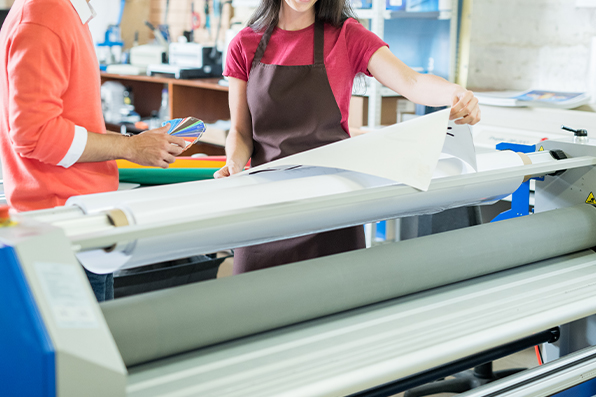
Large Format & Banner Printing: Best Practices, Design Specs, and Troubleshooting
When it comes to grabbing attention, nothing beats the power of large format printing. From bold banners at trade shows to striking posters in shop windows, these oversized visuals demand to be noticed. But if you’ve ever tried creating one, you know it’s not just about making something “big”—it’s about making something big and brilliant.
This banner printing guide will walk you through best practices, essential design specs, and common troubleshooting tips to ensure your next project shines.
Why Large Format Printing Matters
Think of large format prints as billboards for your brand—whether it’s banners, posters, or signage, they speak loud and clear. The trick is to keep the design simple, impactful, and readable even from a distance. In fact, studies show people only have a few seconds to take in your message, so clarity is key.
Best Practices for Large Format Printing
1. Keep Text Short and Bold
Your audience isn’t standing nose-to-banner. Large format designs should communicate in seconds, not minutes. Stick to 5–7 words for your main headline and make sure fonts are legible from at least 10 feet away.
2. Use High-Resolution Images
Blurry graphics? Instant credibility killer. Always design at 150–300 dpi at final print size. For banners viewed from further away, 150 dpi works fine, but posters and close-up displays need that crisp 300 dpi punch.
3. Choose Contrasting Colors
Dark text on light backgrounds—or light text on dark—wins every time. Don’t let your design fade into the background. High-contrast color schemes help your message pop in busy environments.
4. Plan for Bleeds and Safe Zones
Printers aren’t mind-readers. Add at least 0.125–0.25 inches of bleed around the edges and keep text/logos safely tucked in. That way, no important content gets trimmed off during cutting.
Essential Design Specs for Banner Printing
If you want your design to print flawlessly, follow these large format printing tips:
- File format: PDF, TIFF, or EPS preferred (with fonts outlined).
- Color mode: Always use CMYK, not RGB, for accurate color output.
- Bleed: 0.125–0.25 inches (depending on size).
- Safe margin: Keep critical elements at least 1–2 inches inside the edge.
- Resolution: 150 dpi minimum (300 dpi for close-up prints).
- Font size: At least 24 pt for smaller banners; 100 pt+ for large ones.
Troubleshooting Common Banner Printing Problems
Even the best designs can hit a snag. Here’s how to fix the most common issues:
1. Blurry or Pixelated Prints
Cause: Low-resolution images.
Fix: Start with high-res photos or vector graphics. Never stretch a small image to fit.
2. Colors Don’t Match the Screen
Cause: Designing in RGB instead of CMYK.
Fix: Convert to CMYK before sending to print and request a color proof if exact shades matter.
3. Text Too Small
Cause: Forgetting the viewing distance.
Fix: Scale text size to be legible from 5–10 feet away (or more for outdoor banners).
4. White Borders or Cut-Off Elements
Cause: Missing bleed or ignoring safe zones.
Fix: Always include bleeds and double-check your margins before exporting.
Why Work with a Professional Print Partner
Large format projects can be tricky—wrong specs, mismatched colors, or stretched images can ruin your investment. That’s where working with an expert team makes all the difference. At PLC Print, we bring your designs to life with precision, quality, and attention to detail. Whether it’s banners, posters, or oversized graphics, we help you get it right the first time.
Final Thoughts
Large format and banner printing isn’t just about size—it’s about impact. By following these banner printing best practices, using the right design specs, and knowing how to troubleshoot common issues, you’ll ensure your prints turn heads for all the right reasons.
When you’re ready to go big, trust the experts who understand every pixel and every inch. At PLC Print, we make sure your banners don’t just get noticed—they get remembered.


